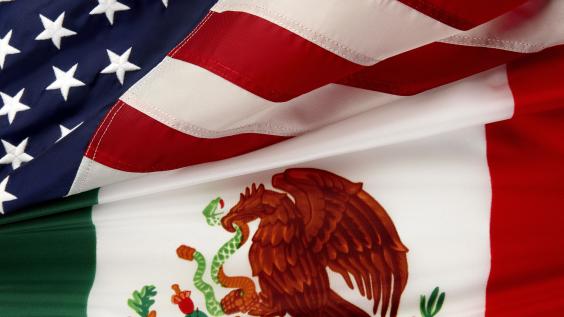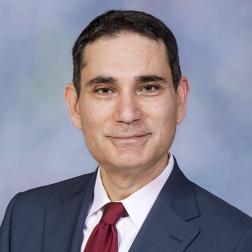Is There a Crisis at the U.S.-Mexico Border?

Table of Contents
Author(s)
Tags
Once again, the media is in a frenzy over the number of unaccompanied minors arriving at the U.S.-Mexico border. Recently, Gov. Greg Abbott launched “Operation Lone Star,” arguing that cartels and undocumented immigrants are again overrunning the border. He intends to deploy additional personnel to safeguard the area. And today, U.S. House Minority Leader Kevin McCarthy led a delegation of House Republican lawmakers to El Paso, Texas, to assess the threat at the border. Abbott and McCarthy argue that the border is in crisis — and that President Joe Biden’s policies are to blame. The president’s actions include the decision to end the Migration Protection Protocol program (MPP), which forced asylum seekers to wait on the Mexican side of the border for their immigration court hearing, and to allow most migrants into the U.S. to await their hearing in their destination city.
Despite Abbott’s and McCarthy’s statements, the current situation at the border is neither a unique crisis nor the result (yet) of Biden’s policy changes. The facts are not on their side. Here is why.
First, cartel activity is no different today than in previous years, including the four years of the Donald J. Trump administration. Cartels continue to bring drugs across the border, largely sidestepping obstacles along the way. Cocaine, heroin and methamphetamines continue to flow, as they did throughout the pandemic, because drug trafficking organizations are highly adaptable and flexible. No policy in the now 50-year-old drug war has been able to stem the flow of drugs across the border.
Second, so far this year, immigration patterns — including those involving unaccompanied minors — are no different than they were in 2020 or 2019. A quick look at the number of unaccompanied minors at the U.S.-Mexico border shows that the count goes up each spring and summer, and that it does not seem to be correlated with the U.S. government’s efforts to stop the human flow. As of today, the case cannot be made that Biden’s policies are causing higher numbers of unaccompanied minors and other immigrants at the border. The migrants currently number over 90,000 a month, and appear to include those who have been waiting on the Mexican side (under Trump policies) to be paroled into the U.S.; those who are part of long-established migrant flows; and, perhaps, some who may think it is easier to enter the U.S. under Biden.
On the last point, the Biden administration should be cautious. Even if the numbers are similar to previous years, easing immigrants into the U.S. to await their immigration hearings could send the wrong signals — and send a number of additional migrants north, overwhelming the system and, worse, jeopardizing Biden’s efforts to reform the immigration system in 2021.
To prevent this outcome, the Biden administration must accelerate steps to, first, devise a plan to invest in Central America; such investments must involve Mexico, the private sector, and public funds. The plan must also ensure that public safety and security in Central America improves. These are the major push forces for migrants arriving at the border. Interestingly, El Salvador provides a good example of what this strategy could do for migrants who might otherwise head for the U.S. Under President Nayib Bukele, criminal activity in El Salvador has been dropping, and the country’s economy appears poised for growth. In response such changes on the ground, the number of Salvadoran immigrants bound for the U.S. has fallen. In contrast, Guatemala — where economic and security conditions are worsening — is now sending more migrants to the U.S. The same is true of Mexico — and of Honduras, where there has never been an improvement on either score. All of this indicates that a good strategy involves addressing the root causes for migration. On this issue, Biden is correct.
The Biden administration must also invest in modernizing and streamlining the U.S. immigration court system. Cases should not take months and months to resolve. People should be heard and those who qualify to stay should be told quickly; those who do not should be sent home expeditiously. It is unacceptable to take over 800 days to decide a case in immigration court.
Similarly, the Biden administration should create programs in Central America that allow asylum seekers to be heard in their home countries — at U.S. embassies and consulates. They need not travel to the border. The infrastructure can be set up in Central America to create a list of asylum seekers and arrange for a hearing. People try to cross the border because it is their only chance for their case to be heard. If we provide opportunities to file for asylum in their home countries, fewer people would head north toward the U.S. to do the same.
At the same time, Biden must continue to work with Mexico to stem the long-running flow of migrants across Mexico’s southern border. It is imperative to have Mexico’s help with that. Such cooperation worked before, under the Trump administration, and should be maintained.
The success of these strategies depends on continued public support for immigration reform — and on whether opposing politicians continue to throw sand into the gears of the Biden administration, hindering its efforts to move forward.
This material may be quoted or reproduced without prior permission, provided appropriate credit is given to the author and Rice University’s Baker Institute for Public Policy. The views expressed herein are those of the individual author(s), and do not necessarily represent the views of Rice University’s Baker Institute for Public Policy.



